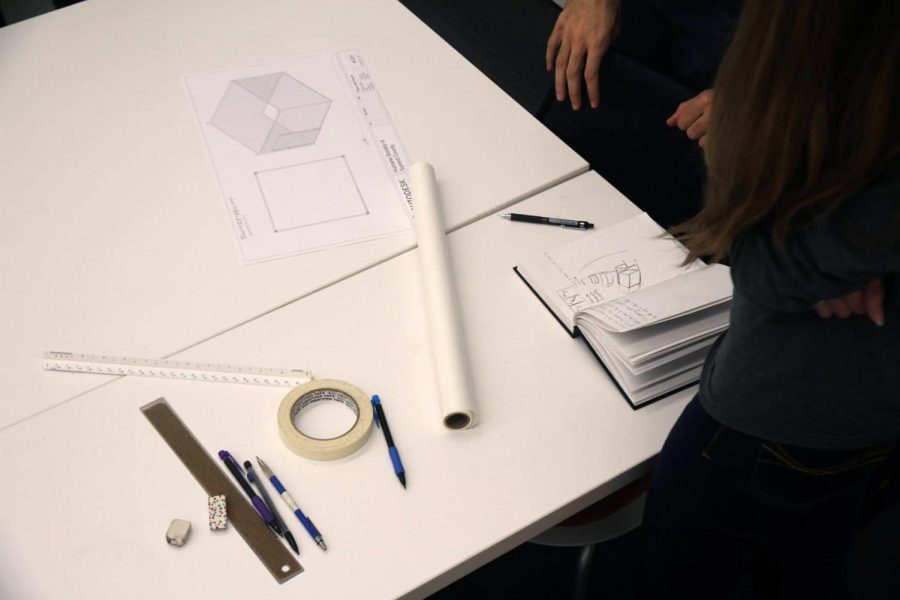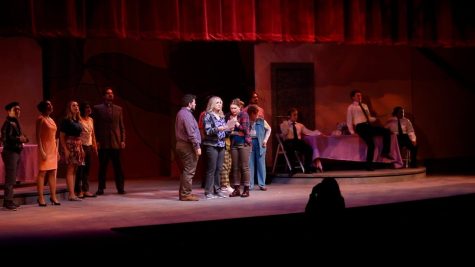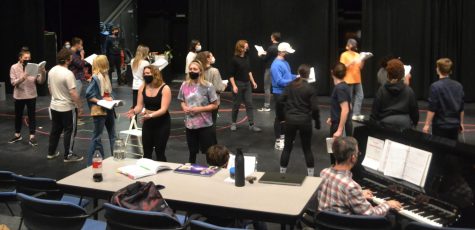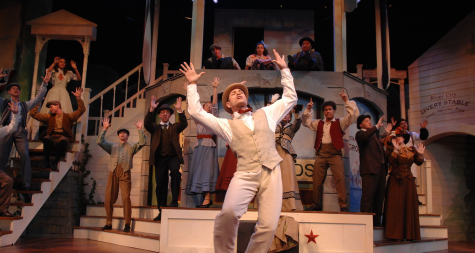Barkitecture members design ‘Kitty City’ for local shelter
Barkitecture members gather materials to begin designs for the Kitty City, an indoor habitat for cats at the Humane Society of Summit County.
March 8, 2017
Kent State students with a love for both animals and environmental design have a new home: Barkitecture.
Barkitecture is a new student organization that intends to work with local animal shelters and humane societies to create safe, well-designed structures to both house and entertain shelter animals.
Joshua Myers, the organization’s president, said he was inspired by other local volunteer organizations to create Barkitecture.
“We saw a need for building for (local shelters) because a lot of them are in positions where they are not in good shape both financially … as well as their buildings,” Myers said.
Initially the group spent time networking with local shelters. Shannon Waller, chief operations officer of the Humane Society of Summit County, contacted the organization for help with a design project, eventually dubbed “Kitty City.”
“At least in my experience, we haven’t had a similar organization come out and say ‘Hey, we want to do something special,’” Waller said. “As far as designing a whole ‘catatorium,’ this is the first time we’ve had something like this, especially with this level of professionalism.”
The Humane Society of Summit County currently houses about 90 cats — a number that Waller expects to double or triple by the summer.
The designated space for “Kitty City” is a 10-foot by 10-foot cage with a collection of cat beds and towers. It was originally created to put shy cats under one roof to make them more social. Instead, they found their own corners and stayed there.
The “Kitty City” project aims to build a unique feline living space within that cage that can house eight cats, shy and social, with enough room for up to four human visitors. Waller and Myers both said they hope that a more interactive and connected space will help the shy cats slowly become more comfortable around people and other cats.
Barkitecture Secretary Hallie Schuld said that the organization, which had nearly 70 people attend their first meeting, came together largely by word of mouth.
At the meeting, Barkitecture members were broken up into teams to come up with different designs for “Kitty City.” Each team was given a focus for their design, which included interactivity, functionality and for Schuld’s team — materiality, or what materials are best for this project.
Nathaniel Williams, a sophomore architecture major, said he had both professional and personal reasons for joining Barkitecture: In addition to being an architecture student, Williams has a passion for helping animals in need.
“We have 12 animals at our house right now — none of them are purebred. My family is super into shelter animals and helping animals who don’t have a home,” Williams said. “This includes horses, a cow, some cats, some dogs and a lizard. I think this is a great opportunity to use one of the passions that my family has instilled in me to give back to the animal community of Ohio.”
Myers said he hoped students outside of the College of Architecture and Environmental Design would contribute to Barkitecture, which is why he reached out to Megan Kraus, a longtime friend with a major in human development and family studies, as well as a minor in nonprofit studies.
“(Myers) approached me with the initial idea of being more like a liaison between the architecture community and the rest of Kent State,” said Kraus, who is now the vice president of the group. “He asked if I would be interested in partaking in a service organization and … if I like dogs and I said ‘Sure!’”
“From there, he asked kind of more of my nonprofit side … I could bring that to the table, in addition to an outside perspective of architecture and design,” Kraus said.
The final designs the group will pursue include benches with holes and shelves underneath for cats to crawl through; a large, curved wall with tunnels and holes for cats to play on; and a suspended “catwalk” to allow the cats alone time.
Myers said they intend to have the official design for “Kitty City” finalized soon and will begin material construction March 18. They hope to have the final project installed at the Humane Society by the end of spring semester.
To fund their projects, Barkitecture will utilize membership fees from student members. They will also be holding fundraisers for extra funding, which will be announced in the coming weeks.
In the future, Myers said he hopes to expand Barkitecture’s volunteer efforts by potentially starting dog walking sessions and staff help days to assist local shelters. This semester, however, they intend to focus on completing their first design project.
Nicholas Hunter is a general assignment reporter, contact him at [email protected].


























